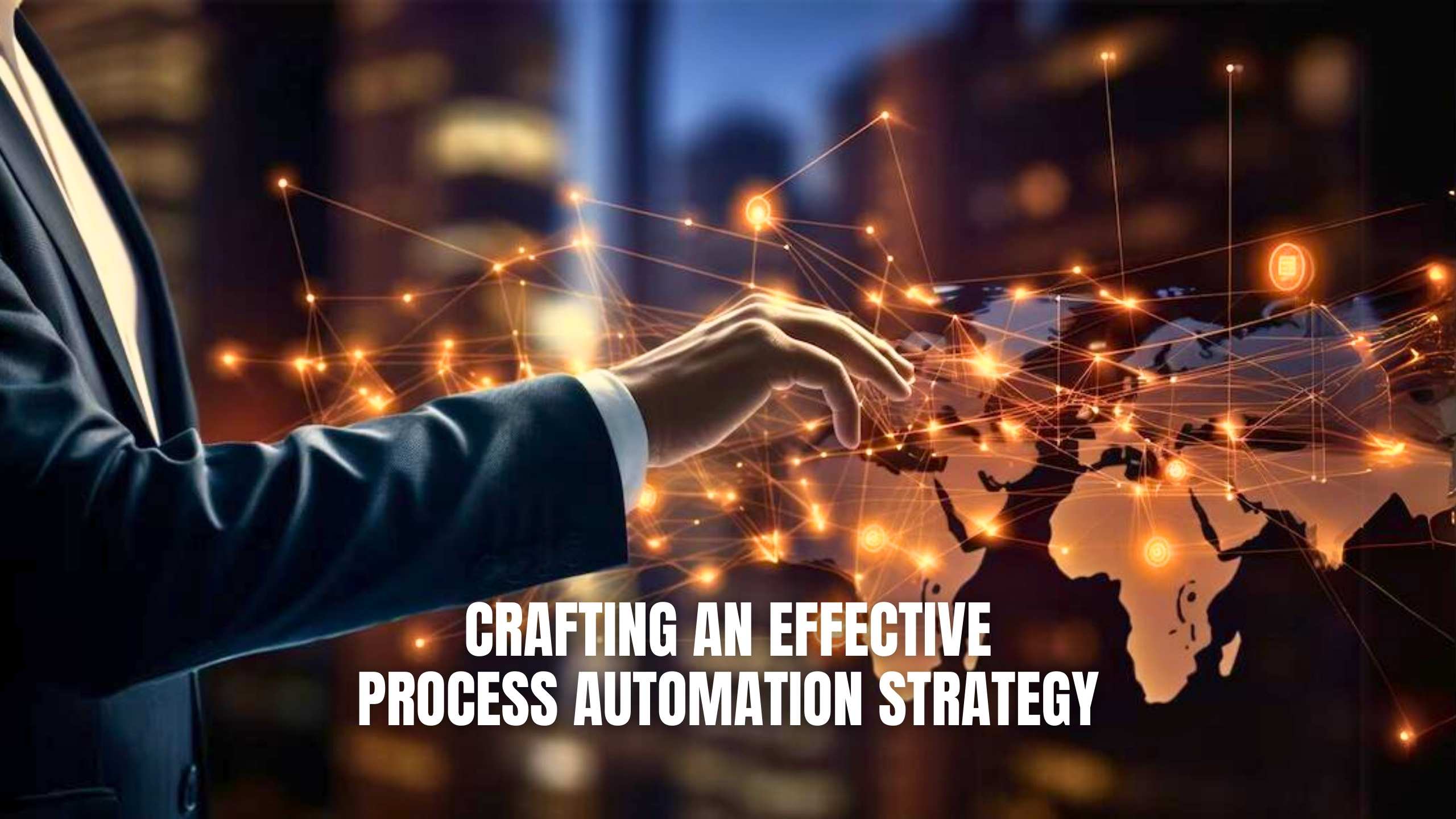Crafting an Effective Process Automation Strategy
-


Crafting an Effective Process Automation Strategy
In today’s rapidly evolving business landscape, the importance of process automation cannot be overstated. A well-crafted process automation strategy can streamline workflows, enhance productivity, and drive operational efficiency across various departments. In this blog, we’ll delve into the essential components of crafting an effective process automation strategy, exploring key considerations, implementation best practices, and the role of automation in modern business operations.
1. Identifying Automation Opportunities
The first step in crafting an effective process automation strategy is identifying areas within your organization that can benefit from automation. This involves conducting a comprehensive assessment of existing workflows, pinpointing repetitive tasks, manual interventions, and bottlenecks that can be automated. By identifying these opportunities, organizations can prioritize initiatives that offer the greatest potential for efficiency gains and cost savings.
2. Selecting the Right Automation Tools
Once automation opportunities have been identified, the next step is selecting the appropriate tools to execute the strategy. Leveraging Software as a Service (SaaS) solutions can be particularly advantageous, offering scalable, cost-effective, and user-friendly automation platforms. SaaS products like Zapier and Workato provide a wide range of integration capabilities, allowing organizations to connect disparate systems and automate workflows with ease.
3. Designing Automated Workflows
Designing effective automated workflows is crucial to the success of a process automation strategy. This involves mapping out the sequence of tasks, defining triggers and conditions, and establishing clear decision points within the workflow. By optimizing workflow design, organizations can minimize errors, reduce processing times, and ensure seamless integration with existing systems and processes.
4. Implementing Robust Governance and Compliance Measures
As organizations embrace automation, it’s essential to implement robust governance and compliance measures to mitigate risks and ensure data security. This includes defining access controls, encryption protocols, and audit trails to safeguard sensitive information and ensure regulatory compliance. By prioritizing security and compliance, organizations can instill trust and confidence in their automated processes.
5. Continuous Monitoring and Optimization
The final component of an effective process automation strategy is continuous monitoring and optimization. This involves tracking key performance metrics, analyzing process efficiency, and identifying areas for improvement. By embracing a culture of continuous improvement, organizations can adapt to evolving business requirements, optimize automation initiatives, and drive sustainable growth.
Relevant SaaS Products:
- Zapier: Seamlessly connect your favorite apps and automate repetitive tasks with Zapier’s intuitive automation platform, empowering your organization to work smarter, not harder.
- Workato: Unleash the power of automation with Workato’s enterprise integration platform, enabling you to automate workflows, connect applications, and streamline business processes with ease.
- UiPath: Transform your business with UiPath’s enterprise-grade automation platform, driving operational efficiency and accelerating digital transformation initiatives across your organization.
- Automate.io: Simplify complex workflows and automate repetitive tasks with Automate.io’s integration platform, empowering your organization to focus on innovation and growth.
- Tray.io: Build powerful, flexible integrations with Tray.io’s general automation platform, ensuring seamless connectivity and automation across your business applications.
Conclusion
In conclusion, crafting an effective process automation strategy is essential for organizations looking to enhance productivity, streamline operations, and drive business growth. By identifying automation opportunities, leveraging SaaS solutions, designing optimized workflows, implementing robust governance measures, and embracing continuous improvement, organizations can unlock the full potential of automation and stay ahead in today’s competitive landscape.
Ready to Optimize Your Process Automation Strategy?
Take your process automation efforts to the next level with Subscribed.fyi. Sign up for free today to access exclusive deals on essential SaaS tools, including automation platforms designed to streamline workflows and drive operational efficiency. Unlock secret deals and embark on your journey towards effective process automation with Subscribed.fyi.
Relevant Links:





